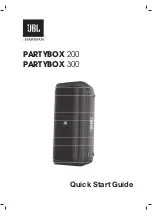
Fatigue Technology Inc.
401 Andover Park East
Seattle, WA • USA 98188-7605
Tel: (206)246-2010
Fax: (206)244-9886
6
57429 – Rev L
S
ECTION
3.0:
P
ULLER
U
NIT
O
PERATING
I
NSTRUCTIONS
Become familiar with these instructions before operating the puller.
3.1
PULLER UNIT SETUP PROCEDURE AND OPERATION
Refer to Section 6 (Illustrated Parts Breakdown) for parts identification.
1. Inspect all threads and fittings for signs of wear or damage and replace them if necessary.
2. Install the appropriate mandrel in the threaded adapter. Install the proper chuck assembly in place of the
threaded adapter if a tang or pintail mandrel is to be used.
3. Install the appropriate nosecap assembly over the mandrel and thread it into place.
4. Uncoil the hose assembly of the puller unit and inspect all threads, couplings, and hoses for damage and
degradation. Any damaged component must be replaced immediately.
5.
Remove thread protectors from the hydraulic fittings and thread the hydraulic hose fitting from the puller
unit (male) onto the hydraulic fitting of the FTI PowerPak (female). Wipe fittings clean prior to connecting.
6.
Thread couplers completely together. There should be positive contact (no space) between the PowerPak
coupler and the hose fitting flange. See Section 5, Problem 2 for more information. Failure to completely
tighten the coupler will cause the puller piston to become stuck in the retracted position. Strain relievers
must be placed on hose fittings during operation. If strain relievers are worn or damaged, they must be
replaced immediately.
7. Connect the male/female air quick disconnects from the puller unit to the FTI PowerPak.
8. Test shop air to ensure that the air is clean, dry, and between 90 and 120 psi (0.621 and 0.827MPa) at
50 cfm (1.42m
3
/min).
9. Connect the female quick disconnect of a 1/2-inch (12.7 mm) ID shop air line onto the male air inlet of the
PowerPak.
3.2
ACTIVATION OF PULLER UNIT
1. The puller unit can be activated only when connected to an FTI PowerPak.
2. Activate the puller unit by depressing the trigger on the handle. Hydraulic pressure is transmitted through
the hose to the cylinder of the puller, which then retracts the hydraulic piston that performs the cold
expansion procedure.
3. Releasing the trigger changes pressure at the pilot valve and stops the pull cycle. Air pressure returns the
puller to original position.
4. If the puller fails to operate as detailed above, refer to Section 5 (Troubleshooting).











































